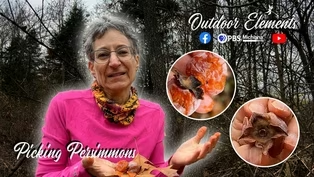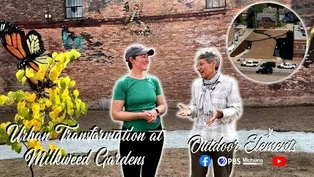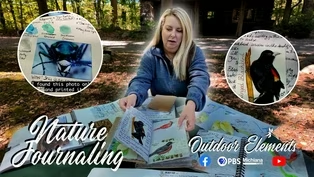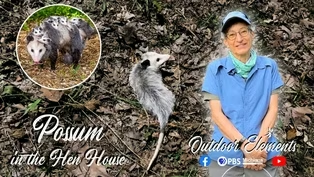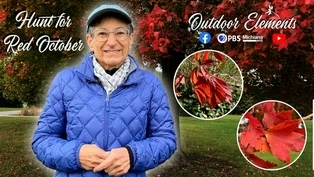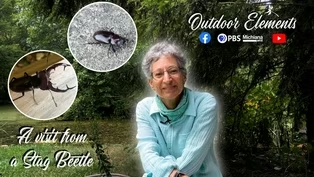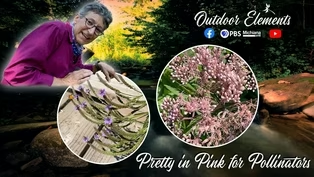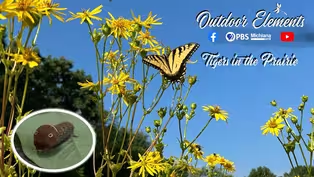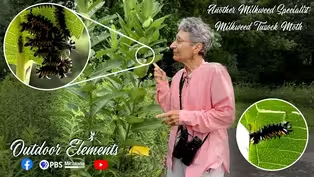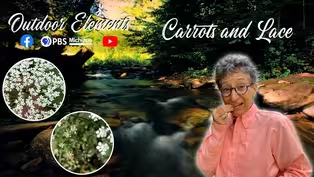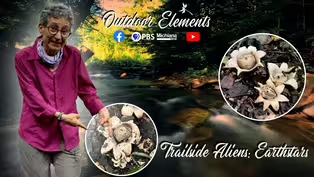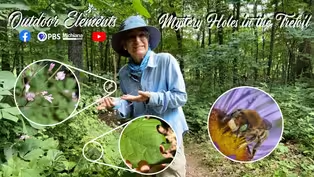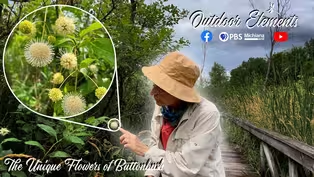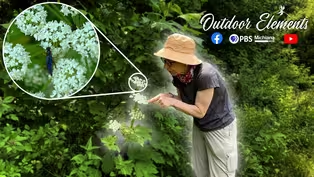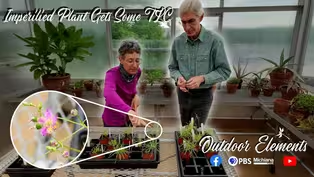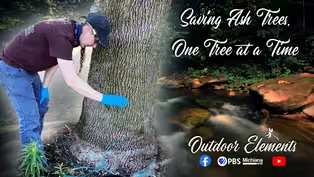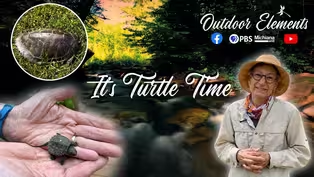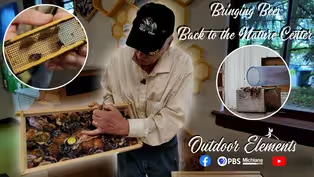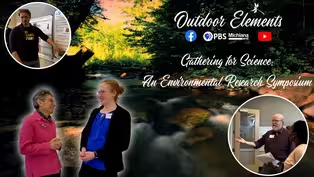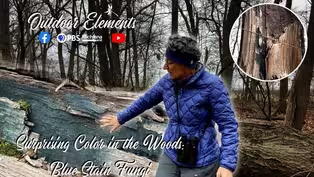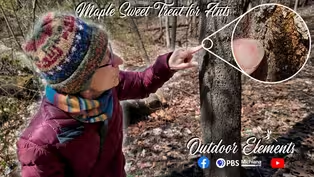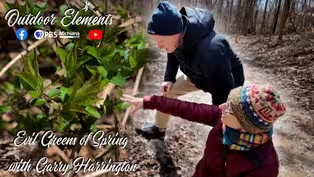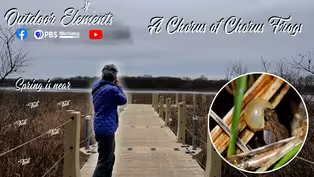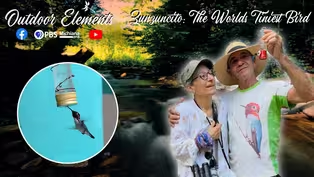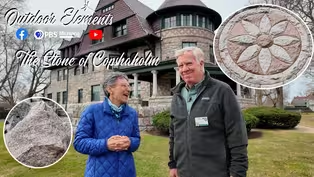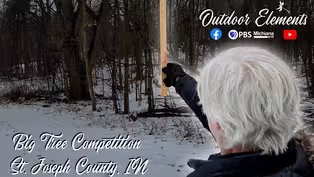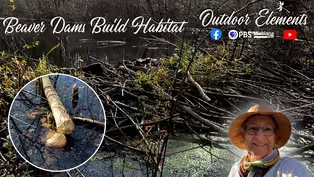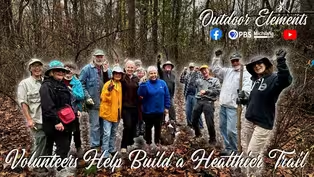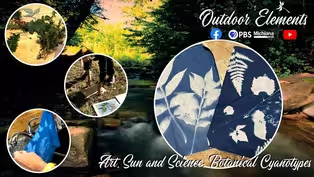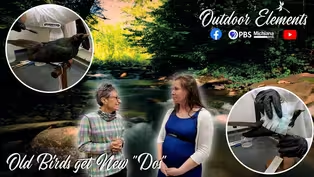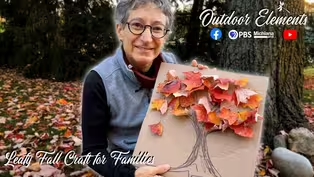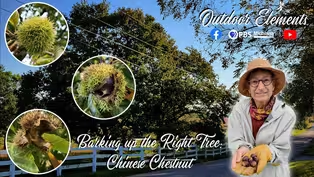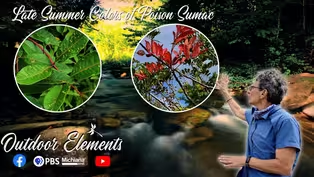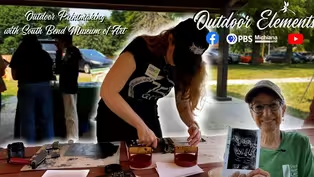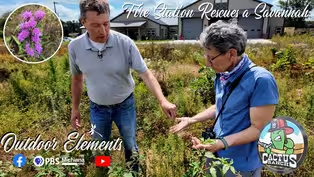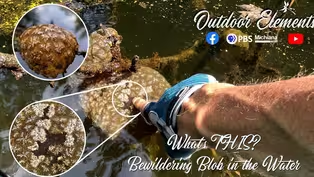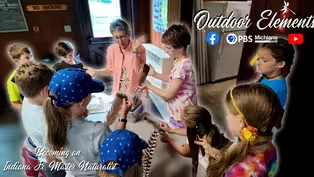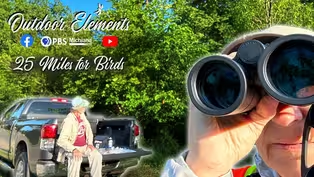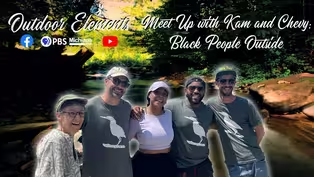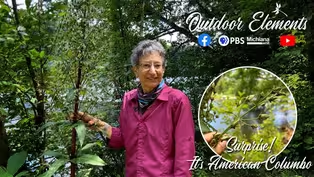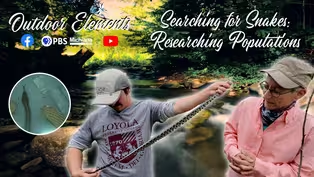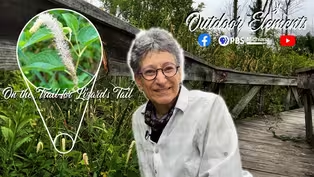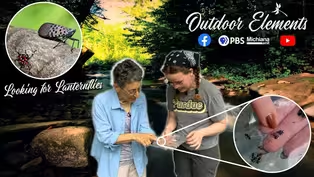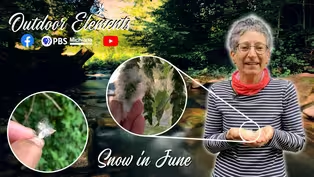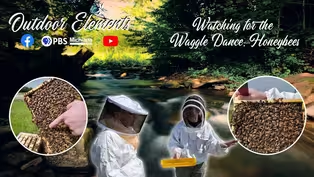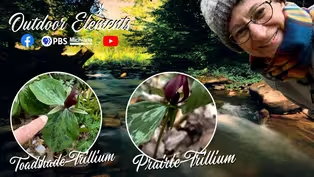Outdoor Elements
Unassuming (but beneficial) Ragweed
Clip | 3m 48sVideo has Closed Captions
No description
In this webisode, Evie takes a closer look at <em>ragweed</em>, a plant that’s often blamed for seasonal allergies but plays an important role in our ecosystem. Learn how this misunderstood weed supports pollinators and birds, even while causing a few sniffles for us humans. Get ready to see this pesky plant in a whole new light!
Problems playing video? | Closed Captioning Feedback
Problems playing video? | Closed Captioning Feedback
Outdoor Elements is a local public television program presented by PBS Michiana
Outdoor Elements
Unassuming (but beneficial) Ragweed
Clip | 3m 48sVideo has Closed Captions
In this webisode, Evie takes a closer look at <em>ragweed</em>, a plant that’s often blamed for seasonal allergies but plays an important role in our ecosystem. Learn how this misunderstood weed supports pollinators and birds, even while causing a few sniffles for us humans. Get ready to see this pesky plant in a whole new light!
Problems playing video? | Closed Captioning Feedback
How to Watch Outdoor Elements
Outdoor Elements is available to stream on pbs.org and the free PBS App, available on iPhone, Apple TV, Android TV, Android smartphones, Amazon Fire TV, Amazon Fire Tablet, Roku, Samsung Smart TV, and Vizio.
Providing Support for PBS.org
Learn Moreabout PBS online sponsorshipWhy am I croucheddown along the side of a trail?
Because there'sa really interesting plant here.
It might be one thatsome of us are familiar with.
If we suffer from hay fever, I'm not sure why we call ithay fever.
Perhaps if you livein an agricultural area where hay is actually grown,this plant is found there.
It's common ragweedand it is the leading culprit when it comes to latesummer allergies.
Here's why.
The flowering stalks will getteeny tiny yellow flowers.
Very, very, very small.
But they producean abundance of pollen.
And the pollen grainsare so small that it's easyfor them to be wind borne.
The pollen from this commonragweed plant might literally get blowna hundred miles to another common ragweed plant, and then the plantsare pollinated, unlike goldenrod,which blooms at the same time, goldenrodpollen has very heavy pollen, and the only way that that pollen can be transferredfrom plant to plant is from the hard workof pollinating insects that carry itas they're drinking the nectar.
We see goldenrodblooming at the same time, but ragweed is the culpritfor our allergies.
So how do we identify it?
Well, it's got fern like leaves.
They're very, very soft.
A little bit of a grayish touchand the stems very hairy.
And then it gets these floweringstalks, which, as I mentioned,will produce teeny tiny flowers, tiny yellow flowers,pollinating insects, especially small ones, are attractedto those little tiny flowers.
And sometimes the pollen fromthose little flowers will clump down on the leafsurface right below.
So if you look closely, you might even seeclumps of that yellow pollen as it's dropped down, especially if we've had rainor dewy conditions.
Then that pollen gets wetand won't be wind borne.
So what good is it?
Well,I mentioned pollinating insects.
It is a great source of nectarand pollen for many insects.
There's a little grub here that's actually chompingdown on the leaf.
So some insects use ragweedas a host plant for their larval stage.
And when the plantgets pollinated or fertilized and these stalksthen produce seeds, they're really high in fatand oil.
That's importantfor many types of birds, especially onesthat overwinter with us.
When it's cold,you need lots of calories, and then these seeds providethat nutrition.
Birds like morningdoves will feed on it.
Even some of our gamebirds like ring neck pheasant or bobwhite quail in areaswhere we still have those birds present.
So even though it is a muchmaligned plant, you can see by all the insects flying around methat pollinating insects benefit it and songbirdsbenefit from it.
So it does have a good rolein our ecosystem.
Remember,you can find your own outdoor elements when you visit areaparks and natural areas.
We'll see you soon.
Video has Closed Captions
Clip | 3m 38s | 🍂✨ Out on a fall walk in the woods, Evie stumbled upon a sweet seasonal surprise — (3m 38s)
Urban Transformation at Milkweed Gardens
Video has Closed Captions
Clip | 17m 11s | No description (17m 11s)
Video has Closed Captions
Clip | 11m 50s | 🌿🖊️ It’s time to slow down and connect with nature! In this episode of Outdoor E (11m 50s)
Video has Closed Captions
Clip | 3m 20s | 🐔👀 There’s a possum in the hen house! 🐾 On this episode of Outdoor Elements, E (3m 20s)
Video has Closed Captions
Clip | 2m 57s | 🍁 It’s that time of year when nature puts on its most colorful show! 🌳 In this epi (2m 57s)
Video has Closed Captions
Clip | 3m 36s | 🌿🪲One of our awesome viewers spotted a beetle making its way across the driveway and (3m 36s)
Video has Closed Captions
Clip | 3m 24s | A viewer shared a fascinating video of a Paintedhand Mudbug, and Evie dives into the detai (3m 24s)
Pretty in Pink for Pollinators
Video has Closed Captions
Clip | 5m 3s | At Lydick Bog Nature Preserve, Evie spots a burst of pink in a wetland. She explores these (5m 3s)
Another Milkweed Specialist: Milkweed Tussock Moth
Video has Closed Captions
Clip | 4m 36s | No description (4m 36s)
Video has Closed Captions
Clip | 3m 43s | Evie spotted Pointed-leaf Tick-Trefoil and shares how to identify this plant. (3m 43s)
The Unique Flowers of Buttonbush
Video has Closed Captions
Clip | 3m 58s | Evie finds Buttonbush at Spicer Lake Nature Preserve (3m 58s)
Saving Ash Trees, One Tree at a Time
Video has Closed Captions
Clip | 11m 16s | No description (11m 16s)
Bringing Bees Back to the Nature Center
Video has Closed Captions
Clip | 6m 10s | No description (6m 10s)
Gathering for Science: An Environmental Research Symposium
Clip | 10m 27s | Evie stops by the St. Joseph County Public Library during their Earth Day celebration to c (10m 27s)
Surprising Color in the Woods: Blue Stain Fungi
Video has Closed Captions
Clip | 3m 48s | No description (3m 48s)
Maple Sweet Treat for Ants | Outdoor Elements
Video has Closed Captions
Clip | 1m 34s | A sweet surprise in the woods! (1m 34s)
Evil Greens of Spring with Garry Harrington
Video has Closed Captions
Clip | 12m 56s | Things are greening up in the spring woods, but it’s not necessarily a welcome sight. (12m 56s)
Volunteers Help Build a Healthier Trail
Clip | 6m 9s | At Lydick Bog Nature Preserve, volunteers make a big difference in protecting and maintain (6m 9s)
Art, Sun and Science: Botanical Cyanotypes
Clip | 6m 49s | Experimenting with cyanotype fabric brings nature to life in beautiful, sun-printed design (6m 49s)
Clip | 3m 57s | Evie shares a fun and simple craft idea using autumn leaves that the whole family can enjo (3m 57s)
Late Summer Colors of Poison Sumac
Clip | 1m 59s | Watch out for this colorful danger at Lydick Bog Nature Preserve! (1m 59s)
What's THIS? Bewildering Blob in the Water
Clip | 5m 8s | What’s that mysterious blob in the water (5m 8s)
Clip | 7m 14s | Find out how thousands of volunteers help the US Geological Survey teams and other resourc (7m 14s)
Meet Up with Kam and Chevy: Black People Outside
Clip | 5m 18s | Meet the inspiring creators behind Black People Outside. (5m 18s)
Surprise! It's American Columbo
Clip | 5m 14s | Explore the unique features of the American Columbo. Discover its habitat, appearance, and (5m 14s)
Searching for Snakes: Researching Populations
Clip | 13m | Delve into the world of snake population research in northern Indiana and discover the met (13m)
On the Trail for Lizard's Tail
Clip | 3m 10s | We are at @SpicerLakeNaturePreserve to learn about the fascinating plant known as Lizard's (3m 10s)
Clip | 7m 35s | Uncover the impact of the invasive Spotted Lanternfly. (7m 35s)
Clip | 3m 6s | Love it or hate it, that flying white fluff looks like “Snow in June!” (3m 6s)
Watching for the Waggle Dance: Honeybees
Clip | 12m 32s | Join Evie as she interviews Morgan Carr-Markell, Assistant Professor at Saint Mary's Colle (12m 32s)
Clip | 5m 1s | Join Evie in Outdoor Elements as she dives into the world of wildflowers, comparing Prairi (5m 1s)
Providing Support for PBS.org
Learn Moreabout PBS online sponsorshipSupport for PBS provided by:
Outdoor Elements is a local public television program presented by PBS Michiana
